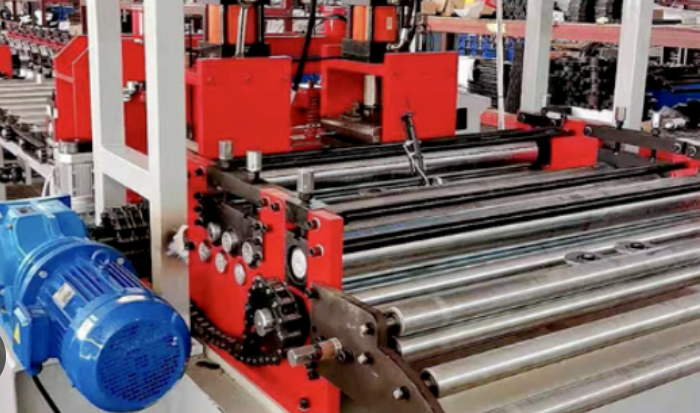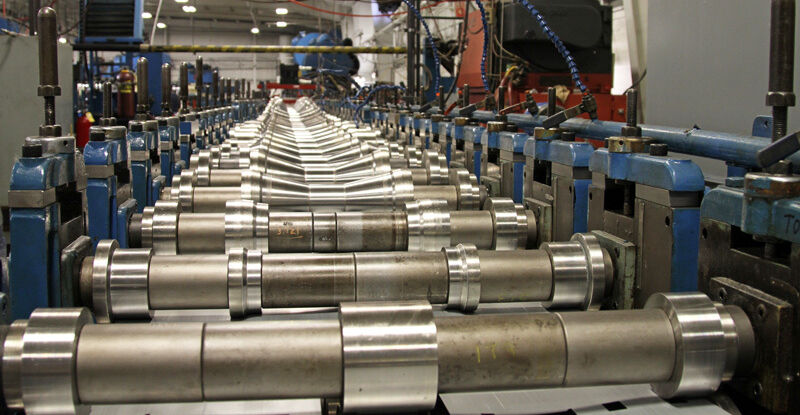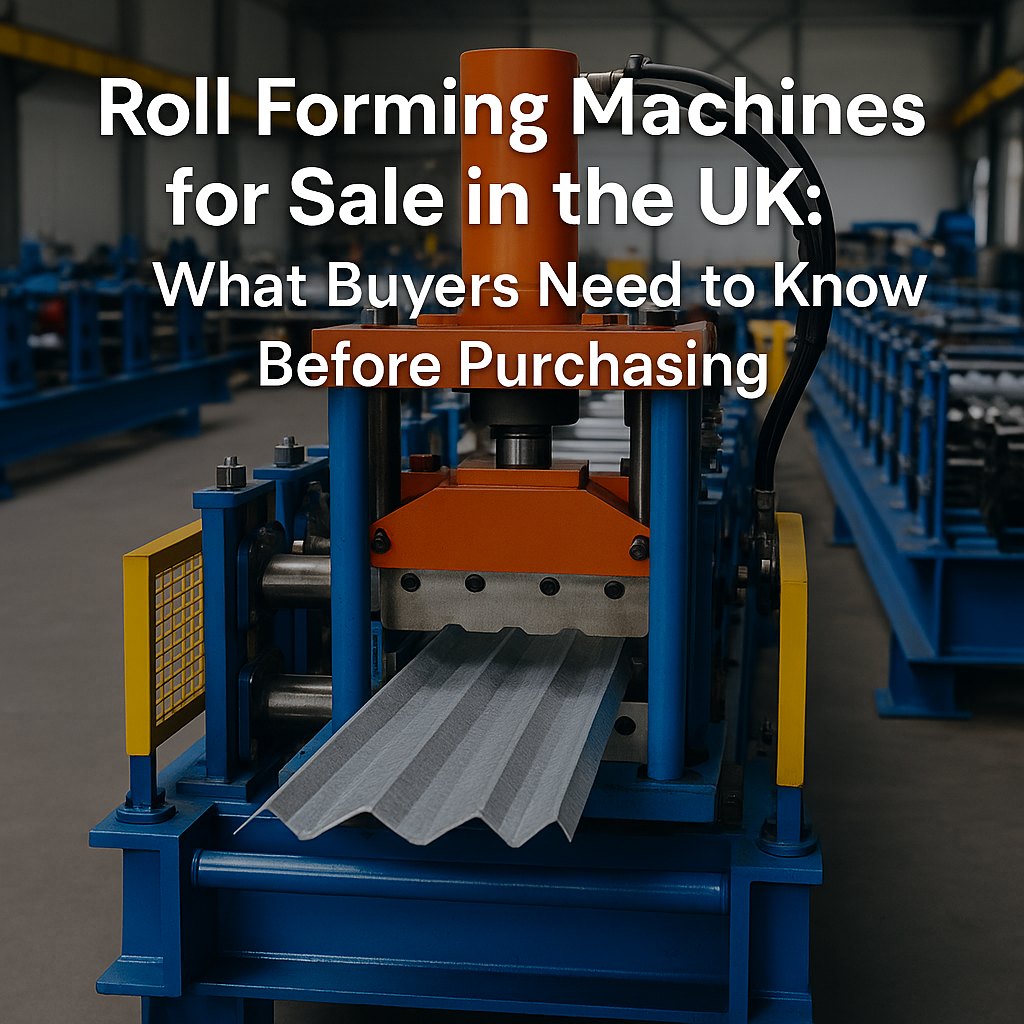
Posted on Wednesday, September 24, 2025
The motor is one of the most critical components of a roll forming machine. It provides the power that drives the rollers, ensuring accurate forming and continuous production. Over time, motors may fail due to wear, overheating, or electrical issues, and replacing them becomes necessary to keep your operation running smoothly.
In this guide, we’ll walk you through the process of safely removing and replacing a roll forming machine motor, with best practices to prevent downtime and costly mistakes.
A roll forming machine depends on precise, consistent power. A failing or underperforming motor can cause:
Reduced line speed and productivity
Misformed profiles and scrap material
Excessive vibration or mechanical strain
Complete line stoppage
Changing the motor properly restores performance and protects the rest of the machine from unnecessary damage.
Before starting, gather the following:
Wrenches or spanners (metric/imperial as required)
Socket set
Allen keys/hex wrenches
Pulley or belt puller (for belt-driven systems)
Lifting gear (chain hoist, gantry crane, or jack for heavy motors)
Electrical screwdrivers and a multimeter
Lockout/Tagout (LOTO) kit for safety
Shut down the machine and disconnect it from the power supply.
Lockout and tagout the electrical cabinet to prevent accidental startup.
If your machine uses hydraulics or compressed air tied to the drive, release stored energy.
Ensure you have enough workspace to maneuver the motor safely.
Remove the motor’s terminal box cover.
Label each wire before disconnecting — this will make reconnection straightforward.
Use a multimeter to confirm the power is off.
Disconnect and secure all cables away from the motor area.
Belt-driven motors: Loosen the mounting bolts, move the motor inward to release tension, and remove the drive belt.
Direct-coupled motors: Remove the coupling guard, loosen bolts or pins, and slide the shaft clear of the gearbox or coupling.
Support the motor with proper lifting gear to prevent strain or injury.
Remove the base or mounting bolts.
Carefully lift the motor away from its housing.
Position the new motor on the base and align it with the coupling or pulley system.
Insert and hand-tighten the mounting bolts.
Refit the coupling or belt:
For belts, adjust to correct tension (firm but not over-tight).
For couplings, ensure perfect alignment to prevent vibration.
Connect wires according to your labels or the motor’s wiring diagram.
Double-check the motor’s voltage, phase, and rotation requirements.
Secure terminals, replace the cover, and tidy up the wiring.
Reconnect the machine’s power.
Jog the motor briefly to check the rotation direction.
If it runs backward on a three-phase motor, swap two phases.
Run the machine at slow speed to confirm smooth operation.
Listen for abnormal sounds or vibration and adjust alignment if necessary.
Refit all safety guards.
After a few hours of operation, recheck belt tension and coupling bolts.
Record the motor replacement in your maintenance log for future reference.
Even when installed correctly, new motors can sometimes present problems. Here are the most common issues and fixes:
Check power supply: Ensure breakers and fuses are intact.
Verify wiring: Double-check against the motor diagram.
Test overload relay: A tripped relay may need resetting.
Confirm LOTO has been removed: Sometimes overlooked after maintenance.
For three-phase motors, swap any two phase wires at the terminal block.
For single-phase motors, consult the wiring diagram for reversing connections.
Check for shaft misalignment between the motor and gearbox/coupling.
Ensure the motor is bolted down firmly with no base movement.
Inspect couplings or belts for wear or incorrect tension.
Verify correct voltage and frequency supply.
Ensure the cooling fan and ventilation are unobstructed.
Check for overloading — the motor may be undersized or the machine jammed.
Look for short circuits or loose connections.
Test insulation resistance with a megger (if available).
Confirm motor specifications match the machine’s power requirements.
1. How long does it take to replace a motor on a roll forming machine?
Typically, 2–4 hours for smaller motors and up to a full shift for larger, complex installations, depending on accessibility and alignment requirements.
2. Do I need to replace the motor with the exact same model?
Ideally, yes. If a different model is used, it must match the original’s power rating, voltage, RPM, mounting type, and shaft size. Always consult the machine’s technical documentation.
3. Can I upgrade to a more powerful motor?
In some cases, yes — but only if the gearbox, drive system, and electrical controls can handle the increased power. Otherwise, upgrading could cause damage.
4. What’s the most common mistake when replacing a motor?
Incorrect wiring, poor shaft alignment, and overtightened or loose belts/couplings. These can cause premature wear or immediate failure.
5. Do I need an electrician to reconnect the motor?
If you are not trained in industrial electrical systems, then yes. Always have a qualified technician handle the wiring to avoid safety risks and compliance issues.
6. How often do motors need replacing on roll forming machines?
With good maintenance, motors can last 10–15 years or longer. Factors like operating hours, load, and environmental conditions will affect lifespan.
A new motor is an investment, and proper care will extend its service life. Here are practical steps to keep it running efficiently:
Keep the motor clean – Dust, metal shavings, and oil can block cooling vents and cause overheating. Wipe down regularly.
Inspect bearings – Listen for unusual noise and apply proper lubrication schedules recommended by the manufacturer.
Check alignment periodically – Vibration can shift mounts over time; misalignment leads to premature wear.
Monitor load levels – Running a motor under constant overload shortens life significantly. Ensure the machine isn’t binding or overworked.
Maintain proper belt tension – On belt-driven systems, belts that are too tight or too loose will wear both belts and bearings.
Ensure ventilation and cooling – Keep air paths open and cooling fans unobstructed.
Perform regular electrical checks – Inspect wiring for looseness, test insulation resistance, and monitor for unbalanced phases.
Record motor data – Keep track of running hours, amperage draw, and maintenance activity to spot problems early.
Always follow Lockout/Tagout (LOTO) procedures.
Never attempt to lift a motor by hand if it is too heavy — use hoists or cranes.
Ensure alignment is precise — misalignment can destroy bearings and shorten motor life.
If unsure about electrical connections, consult a qualified technician.
Replacing the motor on a roll forming machine is a task that requires both mechanical and electrical knowledge, as well as strict safety discipline. By following a structured process — from preparation and disconnection to installation, testing, troubleshooting, FAQs, and preventative maintenance — you can reduce downtime and extend the service life of both the motor and the machine.
At Machine Matcher, we provide expert support for all aspects of roll forming machine operation, from sourcing new equipment to technical maintenance advice.

Most Popular Roll Forming Machines in the United Kingdom
Posted on Thursday, December 11, 2025
This blog breaks down the five most in-demand roll forming machines in the UK

Can I Finance a Roll Forming Machine?
Posted on Thursday, December 11, 2025
Financing a roll forming machine is easier than most buyers think. Here’s how leases, loans, and payment plans make production affordable.

Roll Forming Machines for Sale in the UK: What Buyers Need to Know Before Purchasing
Posted on Thursday, December 11, 2025
This complete guide explains everything UK buyers must know before purchasing, including machine types, voltage requirements, CE/UKCA compliance

Roll Forming Machines for Sale in the USA: What Buyers Need to Know Before Purchasing
Posted on Wednesday, December 10, 2025
This guide explains everything U.S. buyers need to know before purchasing a roll forming machine, including machine types, pricing, voltage
Copyright 2026 © Machine Matcher.